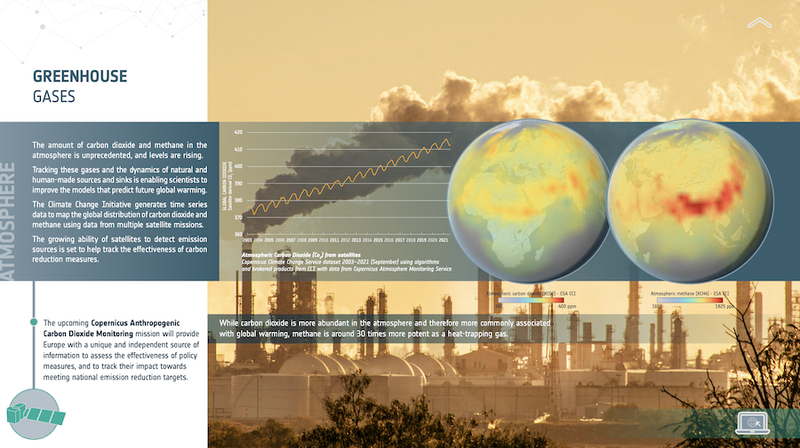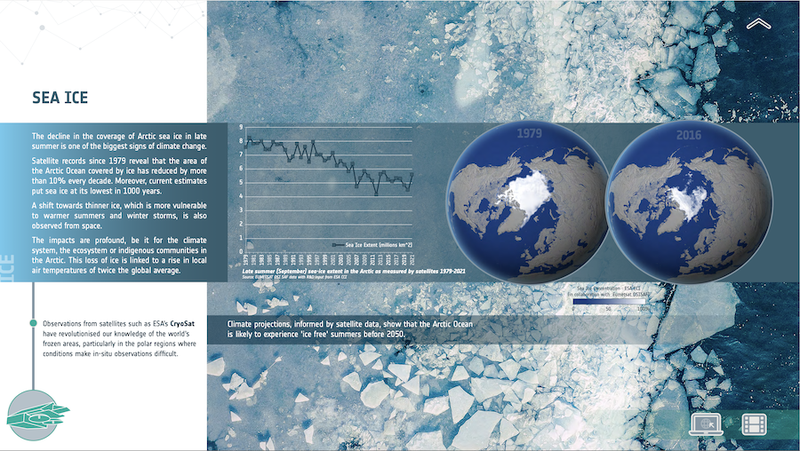8. Dezember 2021
CCI research features in interactive Climate Change Kit
Launched at COP26, new climate guide highlights value of satellite climate observations
The growing role satellites play in monitoring and addressing climate change is highlighted in ESA’s new easy-to-use ESA Climate Change toolkit.
The interactive toolkit, recently launched at the recent UN climate summit, COP26, in Glasgow, explains how satellites have advanced scientific knowledge of the Earth system. It illustrates key research based on global climate time series generated via ESA’s Climate Change Initiative.
The Climate Change Initiative (CCI), which draws on expert teams from across Europe, generates global timeseries for key aspects of the climate by merging data from multiple satellites. These datasets, spanning decades, provide a major contribution to the observed evidence of our changing world.

Key examples illustrated in the toolkit include the rise in atmospheric greenhouse gas concentrations - to within 1ppm for carbon dioxide - and the stark impacts on the planet. The shrinkage of the Earth’s frozen area is one major indication of change, with an estimated trillion tonnes of land and sea ice lost annually according scientists drawing on CCI satellite surveys. Moreover, these losses contribute to rising global mean sea level, another climate indicator tracked continuously from space for almost 30 years and the focus of CCI research.
The CCI’s long-term climate records are regularly used to compare to climate model outputs - for developing and improving the models - and so are key for accurate predictions of future change.
Illustrative examples in the toolkit relate to the Arctic, where models suggest the region’s ocean will be ‘practically’ ice-free in summer months as soon as 2050, while on land, permafrost thaw is anticipated to put infrastructure and communities under threat, as well as potentially contributing to further warming.

Results based on 15 climate data records from CCI are included in the toolkit, including fire, above-ground biomass, sea surface temperature and glaciers. In addition infographics illustrate key concepts including the current status of the carbon budget – the amount of carbon emissions available before humanity passes the 1.5oC or 2.0oC warming level thresholds in the Paris Agreement.
To view and download the Climate Change from Space toolkit visit esa.int.

